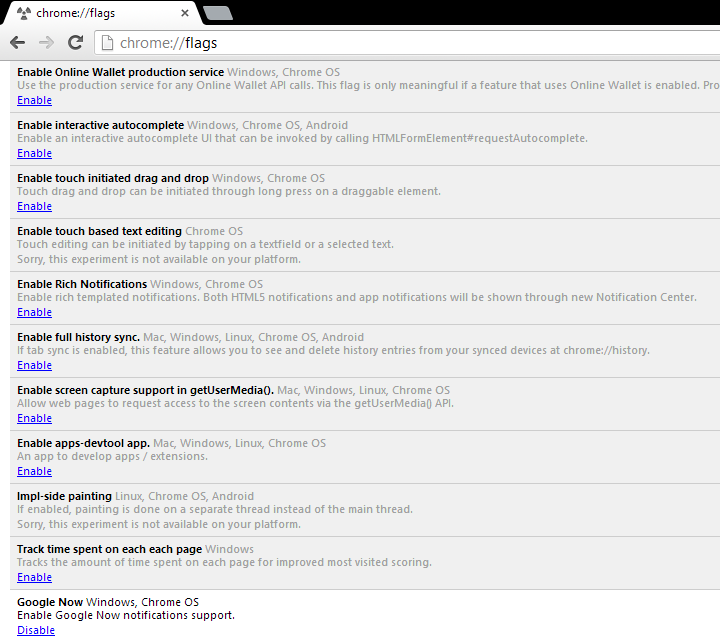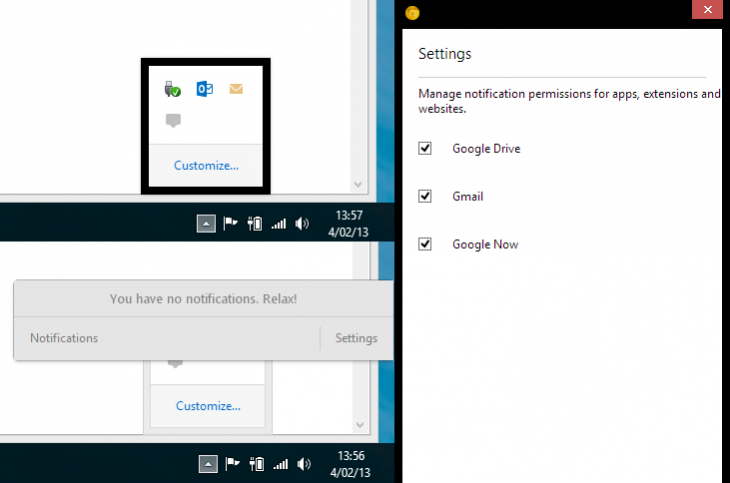
Just a few weeks ago, Google Now showed up in the latest Chromium build for Windows, further fueling speculation that the service was coming to the desktop. The intelligent personal assistant, still limited to Chrome OS and Windows, has now arrived in the Chrome Canary channel, cementing the expectation that Google Now will not remain mobile-only for long.
We’ve known for some two months now that the Chrome OS notification center is getting Google Now integration, and for even longer that the Chrome browser on desktops would likely get it as well, thanks to hints in Chromium’s code. Now it’s finally arrived in the latest Chrome build for Windows (we’re at version 28 for those still counting).
Google Now is currently only available for the Android operating system, and yet here it shows up as a flag at the very bottom of the list in the company’s Windows browser (the flag is also there in Chrome Canary for Mac, but still says “Sorry, this experiment is not available on your platform”):
We can’t play with it just yet because the Google Now server URL still remains secret. If you know it, you can set localStorage[‘server_url’] to the correct value and have a look around.
In our previous Google Now coverage where we noted the service had arrived in Chromium, we noticed that the latest Canary build at the time had by default turned on the “Rich Notifications” option (that’s the internal name for the notification center). We speculated that it would be required to bring Google Now’s cards to the desktop, and now we have further proof of this.
In Canary, the notification center on Windows previously only featured Google Drive and Gmail, simply because the Google Now flag wasn’t present until today. Yet in this latest build, although it’s not turned on by default anymore, if you do turn on both flags, Google Now will show up as well.
In Canary 28, we’re now seeing pretty much the same thing we’ve already seen in Chromium. In the screenshot above, the top-left corner shows how Chrome’s notification center appears as an icon in Windows notification area. In the bottom-right corner, you can see that we have no new notifications and two options: Notifications and Settings.
Since we currently have no notifications, the first option can’t be clicked. The Settings option, however, opens up a new window which you can see on the right-hand side, listing the extensions that can give notifications, letting you quickly check and uncheck which ones you want to notify you. These are all first-party extensions but presumably third-parties will one day be able to leverage them as well.
Google describes Canary as “the most bleeding-edge official version of Chrome and somewhat of a mix between Chrome dev and the Chromium snapshot builds.” Now that both Google Now and the notification center have arrived in Canary, we think it’s safe to say the service will come to Chrome’s dev channel, the beta channel, and in a few months’ time, the stable channel.
Thanks for the tip Magnus!
Get the TNW newsletter
Get the most important tech news in your inbox each week.






